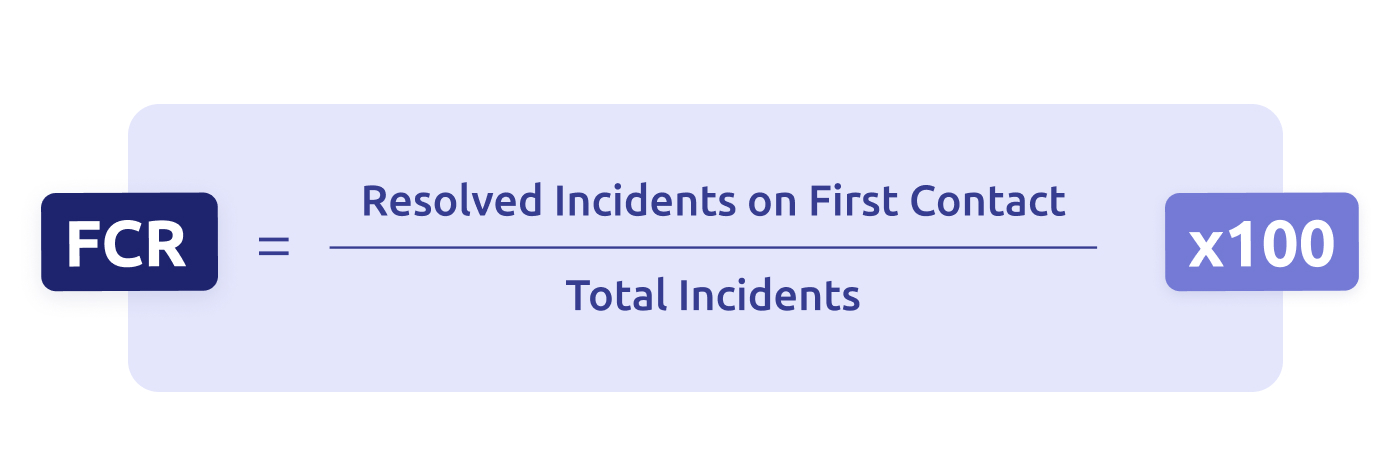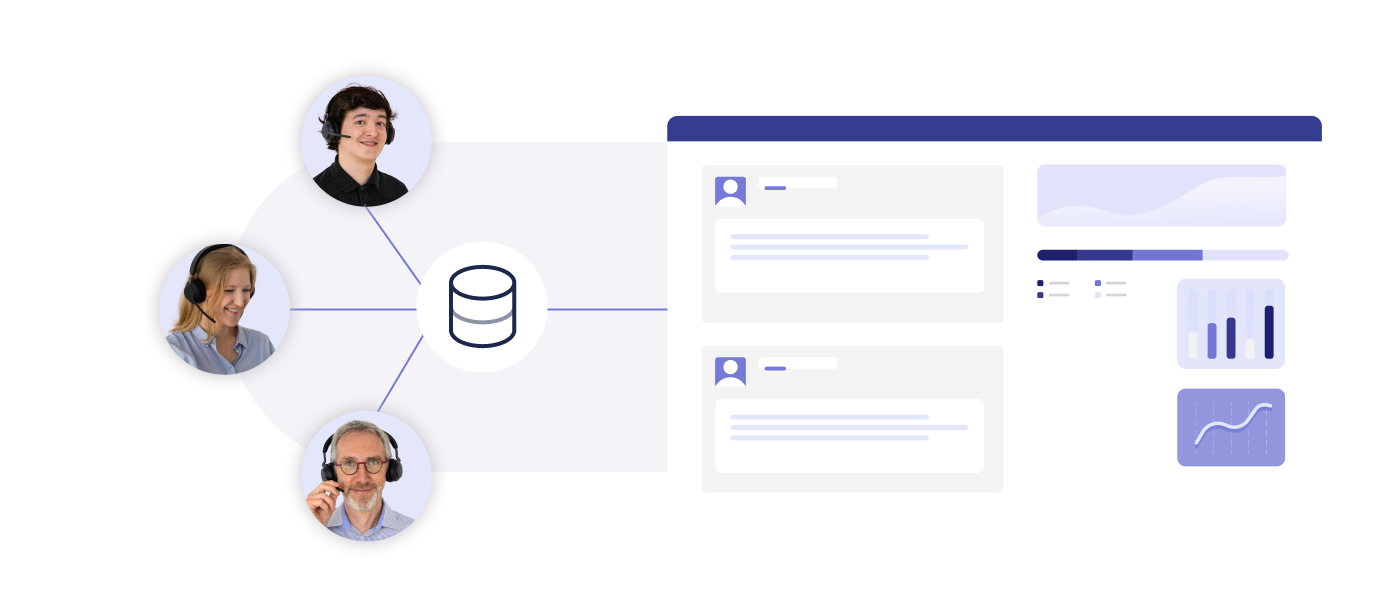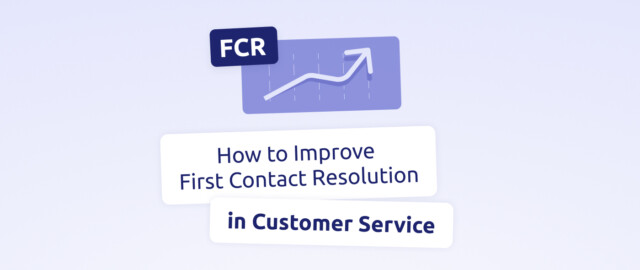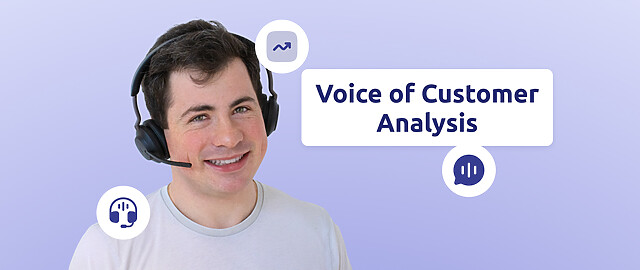What is first contact resolution?
First contact resolution (FCR) measures whether a customer’s issue is resolved during their initial interaction with your support team.
It’s a concrete way to assess your team’s operational efficiency and the customer’s perceived experience. High FCR shows that your agents are not only well-trained and well-equipped but also supported by solid internal processes and smart tools.
More importantly, FCR directly impacts customer satisfaction. When issues are handled immediately, customers walk away with a positive impression of your brand. They’re more likely to stay loyal and recommend your services.
How do you accurately calculate FCR?
Calculating FCR is fairly straightforward:

This metric helps track performance over time, but the key lies in how each company defines “resolved”. For some, a case is closed if there’s no follow-up within 24 to 48 hours. Others rely on post-interaction surveys asking customers directly if their issue was resolved.
To ensure accuracy, you need to clearly define what “resolution” means internally. Consistent standards are essential to avoid skewed results. Without that, you’re flying blind.
Why you need integrated reporting tools
Tracking first contact resolution manually is unreliable. Follow-ups often slip through the cracks, and customer feedback can get scattered. For accurate data, it’s best to use a smart telephony solution with built-in analytics.
These platforms automatically analyze interactions, detect duplicate tickets or callbacks, and give you real-time FCR stats. With visual dashboards, performance alerts, and a clear overview of team efficiency, you’ll get the insight you need to improve.
What happens when FCR is low?
A low first contact resolution rate can hurt both your customer service and your business as a whole.
When customers have to call back, they lose time and trust. What starts as a minor inconvenience can quickly lead to dissatisfaction and churn. That dissatisfaction may not always show up in metrics, but it costs you nonetheless.
Operationally, unresolved issues create more calls and more work for your team. That leads to longer wait times, overwhelmed agents, and spikes in call volume that could have been avoided.
Eventually, your agents start to feel the pressure. They’re constantly dealing with unhappy customers, urgent callbacks, and mounting expectations. Morale drops, turnover rises, and service quality takes another hit.
How to improve first contact resolution

Improving FCR starts with a simple goal: empower agents to solve problems from the get-go. That means easy access to the right information.
A centralized, up-to-date knowledge base gives agents fast answers. They don’t need to guess or transfer calls. With better access to information, conversations are shorter, more accurate, and more likely to result in a resolution on the first try.
Agent training also plays a critical role. Standard classroom sessions aren’t enough anymore. The most effective training is rooted in real-life scenarios, pulled directly from past calls. Tools like call recording and transcription allow agents to learn from actual conversations, preparing them to handle complex or sensitive situations with confidence.
How a CCaaS solution boosts first contact resolution
Modern CCaaS platforms provide everything you need to increase FCR for the long haul.
First, they give agents instant access to customer history. When a call comes in, your team can immediately see past tickets, preferences, and previous interactions. That means fewer repeated explanations, faster resolutions, and a more personalized experience.
Second, smart routing directs each call to the most qualified agent. If a customer calls with a complicated complaint, they’re sent straight to an expert—no bouncing around. By reducing transfers, you increase the odds of solving the issue right away.
Finally, automation and AI are changing the game. AI tools can detect the reason for the call within seconds and suggest tailored responses. They can also categorize inquiries and highlight key follow-up actions, helping agents respond quickly, accurately, and with less cognitive load.
Conclusion: Boosting FCR means transforming customer service
First contact resolution isn’t just another KPI. It reflects the strength of your customer experience, the clarity of your processes, and your team’s ability to respond effectively in real time. A high FCR shows you’re building trust, operating efficiently, and empowering your team to deliver results.
Improving this rate isn’t just about speed, it’s about creating long-term relationships with your customers and giving agents the tools to succeed on their own.
At Diabolocom, we help companies take that next step. Our CCaaS solution brings everything together in one platform: instant access to customer history, intelligent call routing, task automation, and real-time reporting. Every feature is designed to streamline communication and drive sustainable gains in first contact resolution.
Looking to transform your customer service and increase your FCR? Let us show you how—on your terms.
Resolve your customers' requests on the first contact



